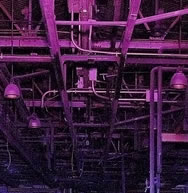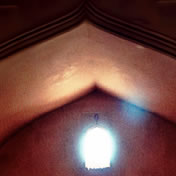ISO is one of the three essential exposure settings.
Exposure | Aperture | Shutter Speed | ISO
Officially, "ISO (I.S.O.) is the abbreviation for the International Organization of Standardization, a governing body based in Europe that provides the standards for a wide variety of subjects." (All Things Photography)
Now, that tells you nothing about what photographic ISO actually is... only where the acronym comes from.Nikon On: Understanding ISO Sensitivity | ISO Intro article |
ISO may be the most awkward to explain of the three exposure settings, but is really pretty simple. ISO has to do with the sensitivity of film (or digital sensor) to light — does the "film" respond well in dim light, or must there be brilliant illumination in order to record an image?
Understanding ISO VideoISO is the third corner of the exposure triangle. When you control aperture, shutter speed and ISO, you have control over Exposure Value (EV), which describes how light interacts with the film/sensor..
If we follow the filling-the-bathtub analogy in the Aperture podcast, aperture is how open the faucet is, and shutter speed is how long you keep the faucet running, ISO is sort of like how deep my tub is... which effects how much water is needed before the tub is properly full.
The higher the ISO setting, the more shallow your tub — the quicker it fills with water, the less light it takes to create white or light tones.
The lower your ISO setting, the longer it takes to properly fill the tub — so you'd better turn the water on full (low-fStop or wide aperture) and expect to leave the water running for a long time. (slow or long exposure, slow shutter-speed)
With a low ISO (say, 50-100), it takes a lot of light to create white or light tones in your image.With a low ISO (e.g. iso50 iso100 iso200) you'll need some combination of
a) a lot of light (such as a sunny day at the beach, or a flash or studio lights)
b) a wide aperture (low f-Stop such as f1.4, f2.0, or on less expensive lenses f4.5 or so.)
c) a slow shutter speed (e.g. 1/60sec or slower if you have a tripod.)
In practice, you may have one or two of these options, but usually not all three. You'll have to pick the best combination of settings with the fewest image compromises.
When shooting in your consumer-scene modes, your camera will select ISO and you won't have to decide.
When shooting in your professional exposure modes (S A P M or Tv Av P M ), you will have control over the ISO setting.As with every exposure control, there are benefits and trade offs to various ISO settings.
A low ISO (eg. 100) creates a higher quality image and a high ISO (eg. 1000+) is of lower quality. "Quality", here, refers to the depth or richness of color saturation, and to the smoothness of color and tonal variations, as well as to the absence of digital noise.
A low ISO needs more light because the sensor is less sensitive and a high ISO needs less light because it is more sensitive.
So, a high quality image using a low ISO will need either stronger light or a longer shutter speed. Inversely, a lower quality image using a high ISO will need less light and thus a faster shutter speed.
An extreme example would be a photographer shooting at night but wanting a high quality image without using a flash. He may need to keep his shutter open for a minute or longer. If he did not care about image quality as much as being able to keep his camera still, he could increase his ISO (lessening his image quality) and could increase his shutter speed accordingly.
How do I decide?
How do I set ISO?(podcast) The Art of Photography (Ted Forbes): Episode 9 :: ISO
ISO is related to sensitivity to light – or more specifically, how sensitive is my film/sensor to light?
Q: How much light does my camera need in order to record the scene?
A: the higher the ISO, the less light you need.Film Speed: ISO rating.
A “slow film” might be ISO 50 (great for portraits) or ISO 100. It takes a lot of light or slow shutter speed to properly expose slow film. The benefit of a low ISO setting is deeper, richer, more subtley varied color and tone, along with little or no digital noise.
A “fast film” or “fast ISO setting” might be ISO 800 or ISO 1600 or greater. Fast film or fast ISO settings require less light or allow faster shutter speeds than slow ISO settings. If I’m shooting action scenes, I’d prefer a fast setting so I can use a fast shutterspeed to freeze action. However, the faster the setting (the higher the ISO setting), the more “noise” will tend to accrue in your image, color will become more coarse and generally somewhat lower in saturation.
As technology advances, digital sensors get better — one aspect of "better" is that newer sensors can shoot at higher and higher ISO settings without producing image noise. In effect, you get cleaner images in very low light.The back of your DSLR will have an ISO button. With that button pressed, you can concurrently scroll to change ISO.
Explore Image: Night Photography | Low Light Images | Candles | Low-Light Portraits |

